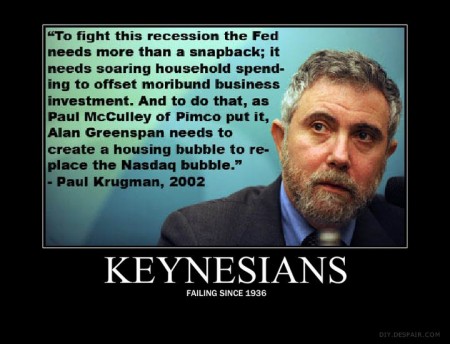Former Goldman Sachs managing director & ‘European Central Bank President Mario Draghi is contemplating taking interest rates into a twilight zone shunned by the Federal Reserve’
What could possibly go wrong?
– Europe’s “Monetary Twilight Zone” Neutron Bomb: NIRP (ZeroHedge, June 27, 2012):
Just because ZIRP is so 2009 (and will be until the end of central planning as the Fed can not afford to hike rates ever again), the ECB is now contemplating something far more drastic: charging depositors for the privilege of holding money. Enter NIRP, aka Negative Interest Rate Policy.
Bloomberg reports that “European Central Bank President Mario Draghi is contemplating taking interest rates into a twilight zone shunned by the Federal Reserve. while cutting ECB rates may boost confidence, stimulate lending and foster growth, it could also involve reducing the bank’s deposit rate to zero or even lower. Once an obstacle for policy makers because it risks hurting the money markets they’re trying to revive, cutting the deposit rate from 0.25 percent is no longer a taboo, two euro-area central bank officials said on June 15… “The European recession is worsening, the ECB has to do more,” said Julian Callow, chief European economist at Barclays Capital in London, who forecasts rates will be cut at the ECB’s next policy meeting on July 5. “A negative deposit rate is something they need to consider but taking it to zero as a first step is more likely.” Should Draghi elect to cut the deposit rate to zero or lower, he’ll be entering territory few policy makers have dared to venture. Sweden’s Riksbank in July 2009 became the world’s first central bank to charge financial institutions for the money they deposited with it overnight.”
There is only one problem when comparing the Riksbank with the ECB: at €747 billion in deposits parked at the ECB as of yesterday, the ECB is currently paying out 0.25% on this balance, a move which may or may not be a reason for the depositor banks, primarily of North European extraction, to keep their money parked in Frankfurt. However, once this money has to pay to stay, it is certain that nearly $1 trillion in deposit cash, currently in electronic format, would flood the market. What happens next is unknown: the ECB hopes that this liquidity flood will be contained. The reality will be vastly different. One thing is certain: inflating the debt is the only way out for the status quo. The only question is what format it will take.
More from Bloomberg:
“It won’t help the prospect of a functioning money market because banks won’t be compensated for the risk they’re taking,” said Orlando Green, a fixed-income strategist at Credit Agricole Corporate & Investment Bank in London. It would make more sense to lower the benchmark rate, thus reducing the interest banks pay on ECB loans, and keep the deposit rate where it is, Green said.
Read moreECB Contemplates ‘Monetary Twilight Zone’ Neutron Bomb: NIRP (= Negative Interest Rate Policy) !!!
